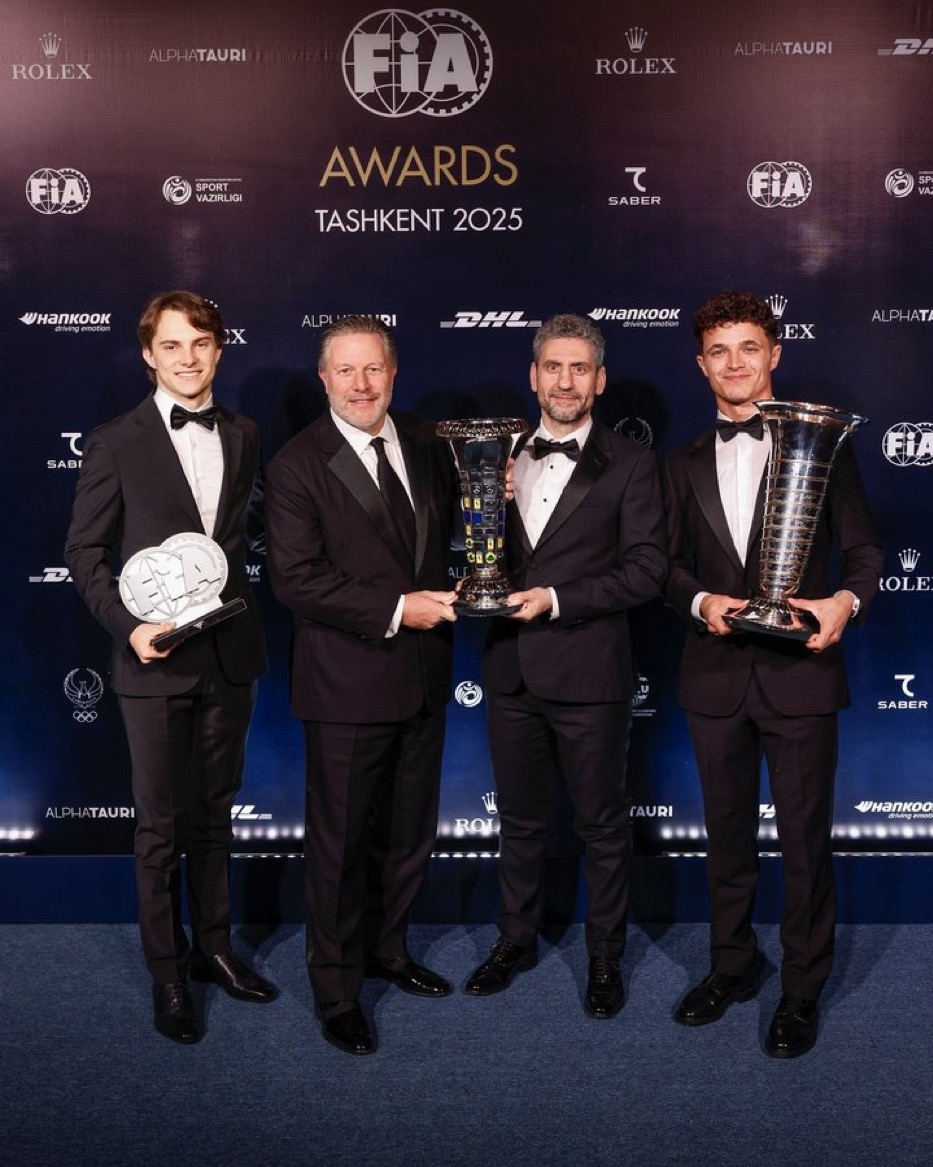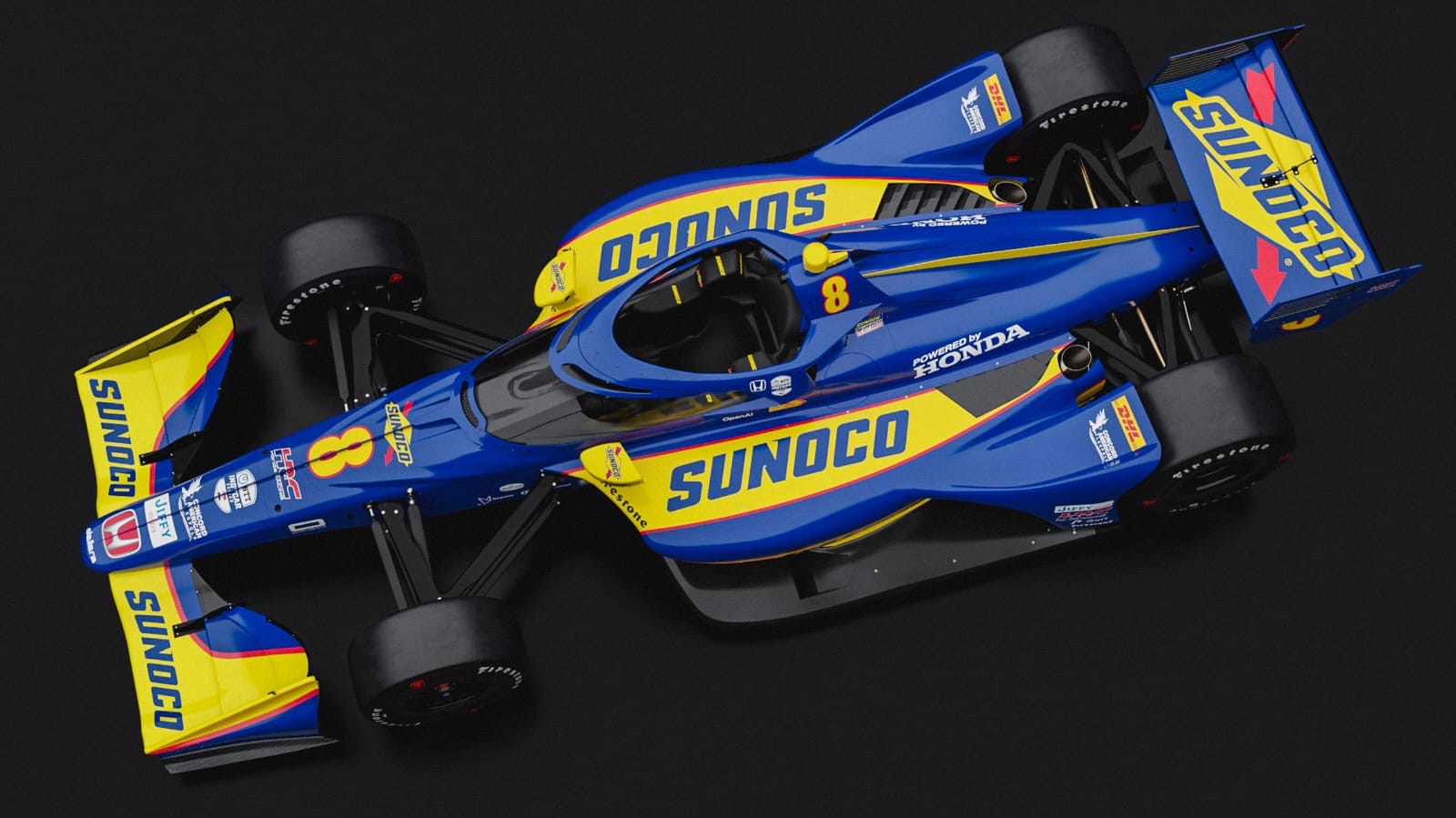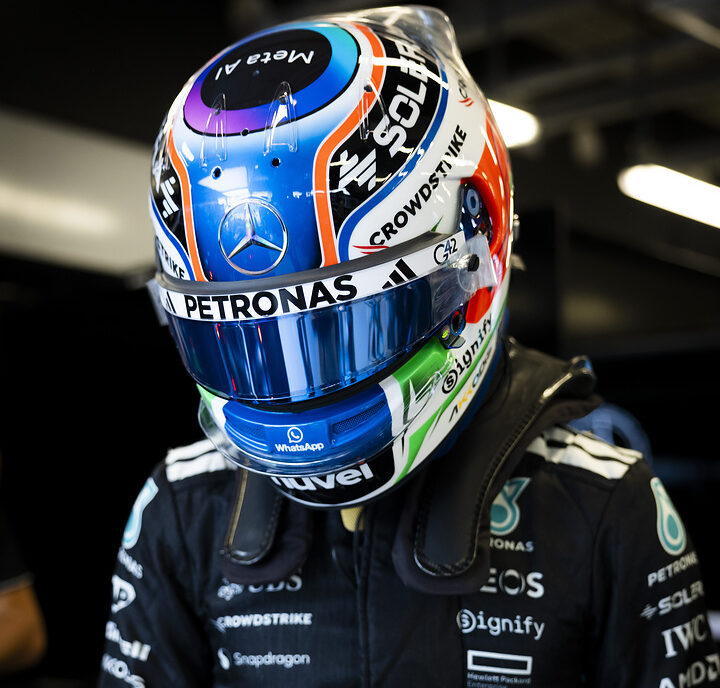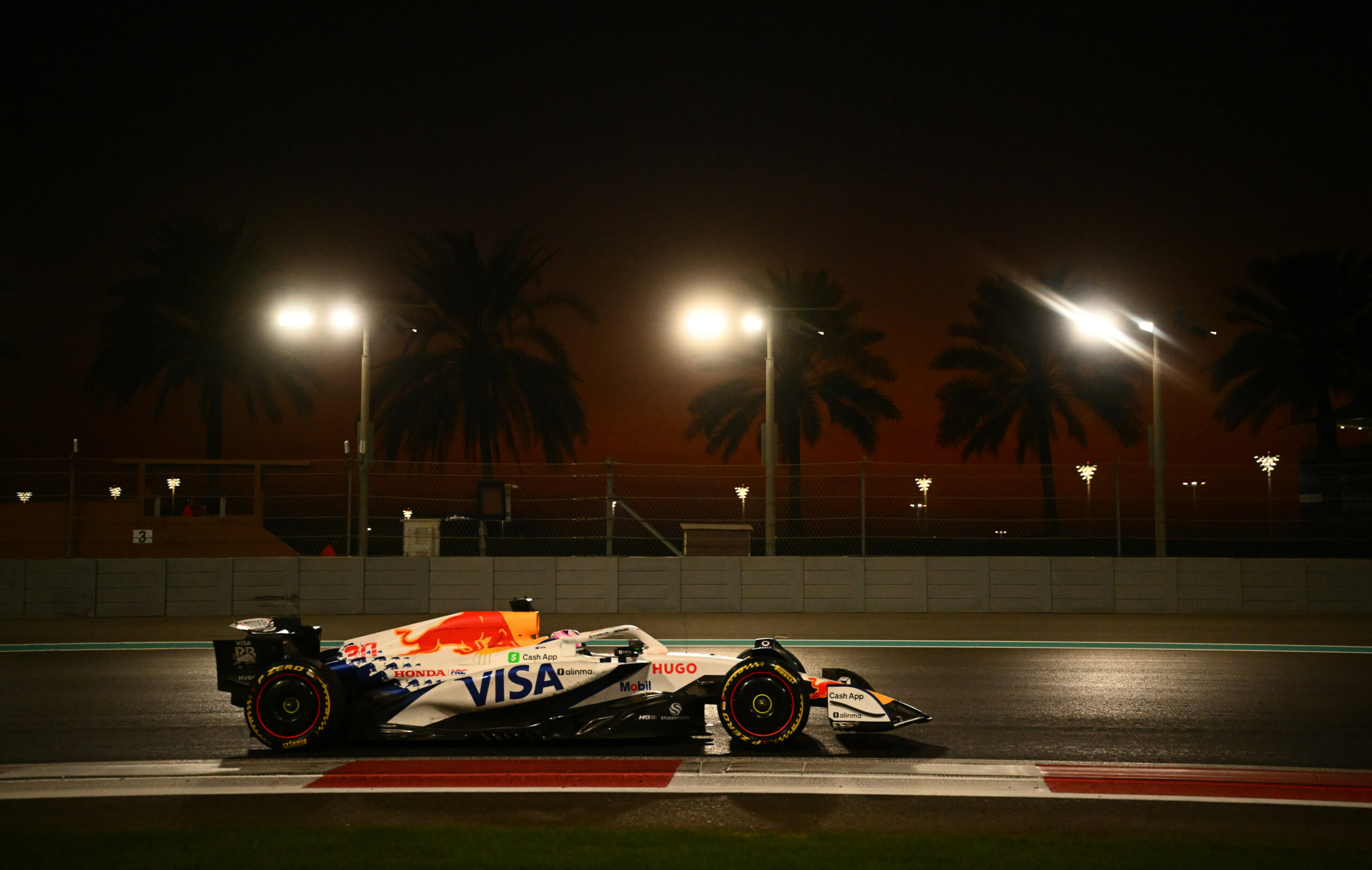Ferrari team principal Fred Vasseur has opened up about the strategy decisions, tyre degradation, set-up choices, and team morale following Charles Leclerc’s stunning podium finish and Lewis Hamilton’s superb recovery drive to P7 at the rain-delayed F1 Belgian GP on Sunday.
After crossing the line in fourth in the Sprint race, Leclerc pipped Max Verstappen by a tiny margin of 0.003 seconds to secure P3 in Grand Prix qualifying on Saturday.
Despite his SF-25 being on a comparatively lower downforce set-up on Sunday, Leclerc’s defensive racecraft allowed him to fend off the Dutchman in the first stint on the intermediate tyres. Making his only pit stop on Lap 12, the Monégasque tactfully managed his mediums and kept Verstappen at bay for the rest of the race and clinched his fifth podium of the season.
Meanwhile, Hamilton encountered a rather difficult Saturday at Spa-Francorchamps. After failing to score points in the Sprint race, he found himself eliminated in the first stage of qualifying owing to a track limits infringement on his final Q1 run.
Following power unit and set-up changes to his car, Hamilton started Sunday’s race from the pit lane. With the high-downforce configuration boosting his confidence in the wet conditions and the Ferrari pit wall pitting him for slicks at the right moment, the seven-time world champion recovered 11 positions in 16 laps. Although he found himself stuck behind Alex Albon’s Williams for the remainder of the race, his recovery to P7 after a poor qualifying was nonetheless encouraging.
Choice of Leclerc’s lower downforce set-up wasn’t easy

Speaking in a print media session after the F1 race, Fred Vasseur shared his insights into why Ferrari opted to leave Charles Leclerc on lower downforce levels despite the forecast predicting a wet Belgian GP on Sunday.
Stating that the team was unsure whether they would encounter tricky wet conditions throughout the duration of the race, Vasseur explained that they had made the choice taking both Saturday’s qualifying on a dry track and the challenges of overtaking in the rain into consideration.
Nevertheless, the Frenchman added that there are always risks involved in such circumstances and that the decision to go for the relatively low-downforce set-up wasn’t a straightforward one.
“At the end of the day, it was not that obvious that today it would be 100% wet. You saw the race and it wasn’t full wet. We had this kind of forecast saying that, okay, you will have tonnes of showers all day, but we also had the advantage to [analyse the situation].
“We knew yesterday the situation for the quali and we knew also that in case of rain, then you also have the spray, it’s difficult to overtake, and so on. But it was a choice, not an easy one, and it was a bit 50-50 on the grid.
“You know, it’s always a kind of bet, because even in the morning [when] I spoke with some of you, I was not expecting that we’ll have the sun in the afternoon.”
Degradation on mediums wasn’t too huge
For Spa-Francorchamps, Pirelli chose three dry weather compounds that were not consecutive, with the C1 acting as the hard tyre, the C3 as the medium, and the C4 as the soft.
In terms of how worn Charles Leclerc’s yellow-walled tyres were in the closing stages of the F1 Belgian GP on Sunday, Fred Vasseur responded that the degradation wasn’t substantial.
Referring to the jump in compounds in the Ardennes, the Ferrari team boss also revealed that they weren’t initially confident about pulling off a one-stopper with the mediums after using the C3 tyres in the Sprint race on Saturday.
Asked if he was surprised by Norris’s quick pace on a compound nobody else in a top team had selected, Vasseur implied that the McLaren driver was willing to gamble with the hards since he had lost the lead to teammate Oscar Piastri. Furthermore, he noted how the Australian and the Ferrari drivers were on the same boat with regard to managing their stint on the mediums and avoiding a second pit stop.
“No, I think that the deg was not that huge.
“When we are in this kind of weekend, don’t forget that we had the C1, C3 this weekend, it’s not so often that you have this gap. And you didn’t long stint at all the C3 or the C1.
“We long stinted the medium yesterday, but not the hard. It was not obvious for us to be able to do one stint with the medium.
“And perhaps Lando [Norris] took the bet to go for one stint with hard. But Piastri, I think, was also on the edge. The first part of the stint, he said, ‘okay, I don’t know if I will have to pit again or not’. And we were in the same situation.”
Vasseur refuses to elaborate on why Hamilton had to frequently lift and coast
Lewis Hamilton received instructions to lift and coast for a significant number of laps in Sunday’s race.
In terms of whether Ferrari took this precautionary measure during the F1 Belgian GP to limit fuel consumption or to avoid excessive plank wear, Fred Vasseur refused to offer further clarifications and quipped that the journalist was perceptive enough to comprehend the source of the issue.
“No, no. You are clever enough to see when we did the lift and coast and to understand the reason.”
Team morale good despite Hamilton’s initial setbacks in Belgium
Regarding the general morale within the team and between the drivers following Lewis Hamilton’s disappointing performance in both the qualifying sessions and the Sprint race, the Ferrari team boss confirmed that they are in high spirits.
Admitting that Hamilton’s setbacks at the F1 Belgian GP were unexpected, Fred Vasseur highlighted how well the Brit and the team bounced back on Sunday. He also commended the 40-year-old for aggressively charging through the field in the challenging wet conditions and applying consistent pressure to Albon with an unfavourable set-up until the end of the race.
Emphasising that they have to capitalise on every single session in order to contend for podiums and wins, the Frenchman proclaimed that the team is united in its efforts and that they are keen to take a further step forward in the upcoming race weekend in Hungary.
“The mood is good. For sure, it’s not the result that we were expecting with Lewis [Hamilton]. I guess [tough] Sprint quali and the quali yesterday, but I think it’s part of the life of a racing team that we reacted collectively very well today.
“Lewis did a great job. He was quite aggressive at the beginning in the extreme conditions. He was able to fight with Albon until the end with the downforce of Budapest. I think it was a good recovery for him also to be efficient like this.
“Now, for sure, we have to do a better job. From the beginning, if you want to score podiums or wins, you can’t let one session away. We will have to do a step next week, but we are all pushing in the same direction.”
How Hamilton was the first driver to switch to slicks
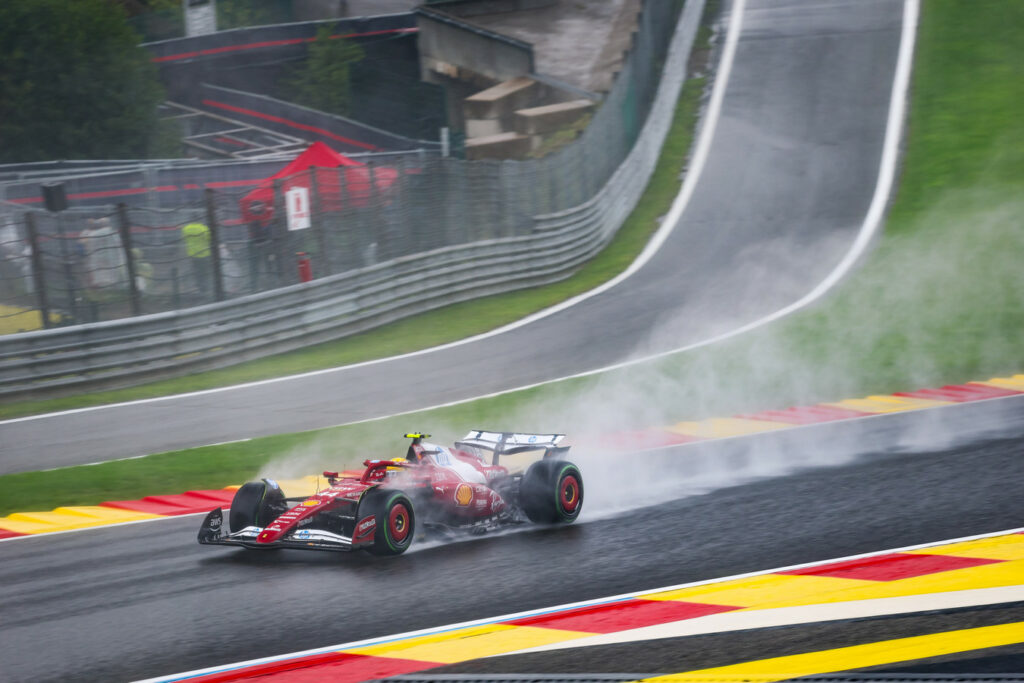
Lewis Hamilton was the first driver from the top four teams to make the bold choice of switching to the slick tyres on Lap 11.
In respect of how the dialogue between the Brit and the Ferrari pit wall progressed before his first stop at the F1 Belgian GP, Fred Vasseur admitted that the move was partially a gamble, given the changeable track conditions.
Underscoring the high degradation the intermediate tyres had suffered, the 57-year-old clarified why they decided not to bolt on a set of fresh intermediates despite not being at the ideal crossover point yet. Labelling the call as aggressive yet accurate, he also explained why Hamilton was the one to trigger the first round of pit stops instead of Leclerc.
“For sure, it was the strategy that when you are in this situation, you have to gamble a little bit.
“The situation is that we were degrading a lot the inter and we were far away from the crossover. Just because the inter was a disaster, they were completely gone, and you put a new set of inter, you are also six seconds faster.
“But I think it was the right call at the right moment, a bit aggressive. We were quite close to do it with Charles [Leclerc], but Charles would’ve been in traffic, and it meant that we did it with Lewis, and I think it was the right call at the right time.”
Asked to confirm that the pit wall had indeed orchestrated the timing of Hamilton’s pit stop, Vasseur insisted that the team and the driver made the decision together.
“Don’t try to split the team and the drivers. It’s always a collective decision.”
Vasseur believes Ferrari ultimately made the right set-up choice for both drivers
With regard to whether Ferrari would’ve opted for the same set-up configurations if they had prior knowledge of how the wet-to-dry race would unfold, Fred Vasseur pondered the different circumstances his two drivers found themselves in at the F1 Belgium GP on Sunday.
Maintaining that they had made the right decision with Lewis Hamilton, the Frenchman explained how the high-downforce set-up was instrumental in his recovery to P7 in the early stages of the race.
However, Vasseur wasn’t as confident when it came to defending the set-up choice for Charles Leclerc.
Acknowledging the risks that accompanied the selection of the final configuration before a dry qualifying on Saturday, the 57-year-old nonetheless surmised that it was the right call following the Monégasque’s defensive drive to the podium.
Highlighting Leclerc’s straight-line speed advantage, Vasseur also added that a slight tweak to the set-up wouldn’t have made a massive impact on the final outcome for the top four finishers in Belgium.
“I think with Lewis it was the right call, because it’s probably in the first couple of laps that you can overtake, and the downforce helps him to come back.
“Then perhaps we had the general pace to overtake Russell or Albon, and we were stuck behind them with the wing, but at least we came back to P7.
“For Charles, honestly I don’t know, because then we are speaking about 2-3 kph between us, Max [Verstappen] and the McLarens.
“When you make the choice on Saturday at 2pm, you have no clue about how many laps you will do on Sunday. For sure it’s a kind of gamble, but I think it was the right call. I’m not sure that in the top 3-4 it would’ve made a huge difference if we had one step more or less.”


